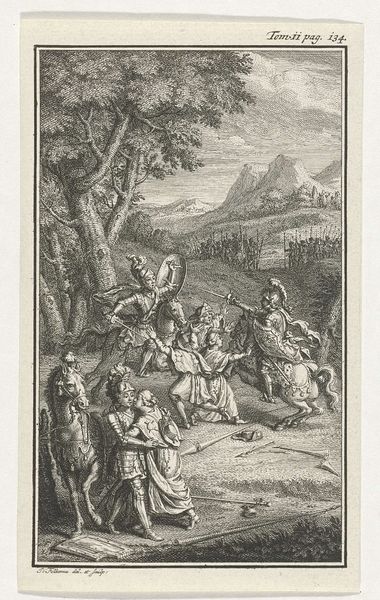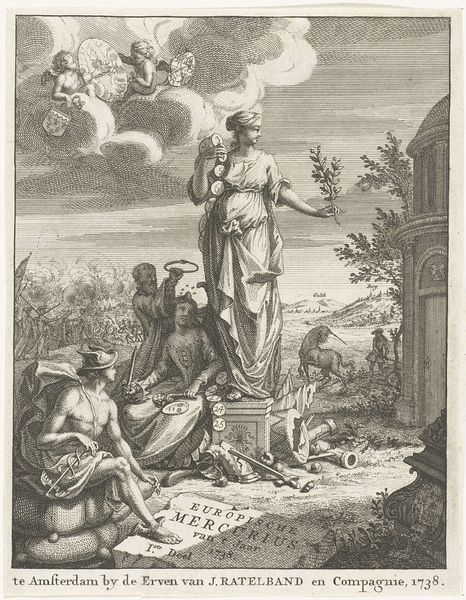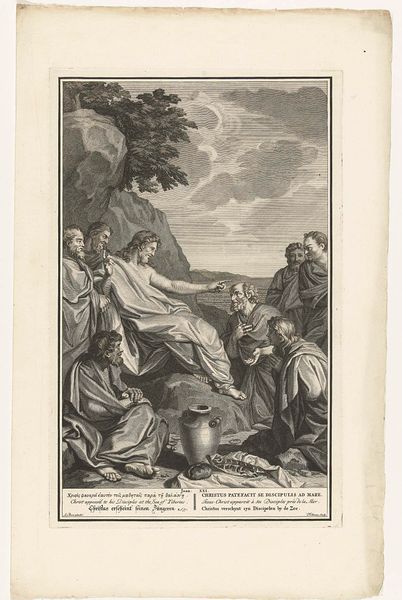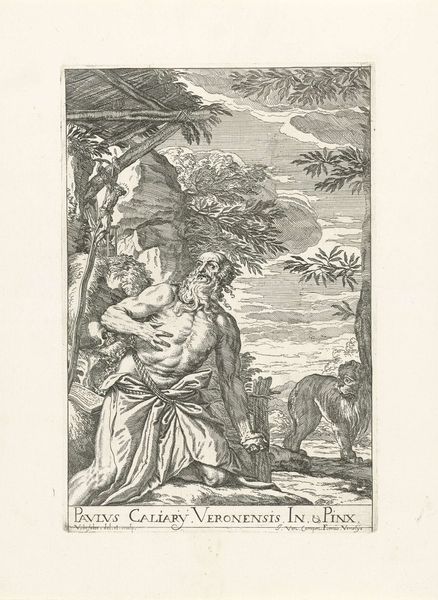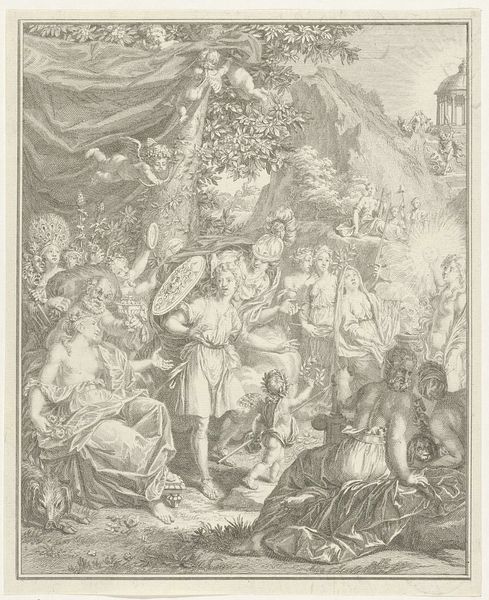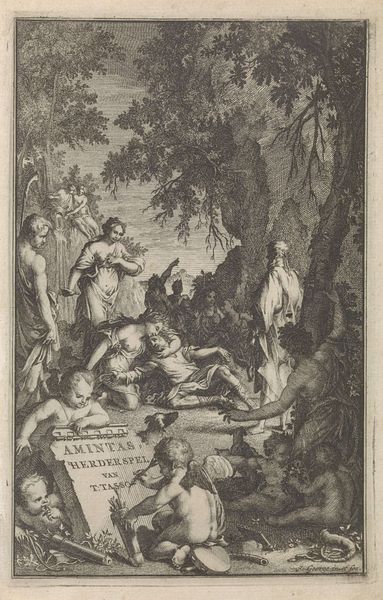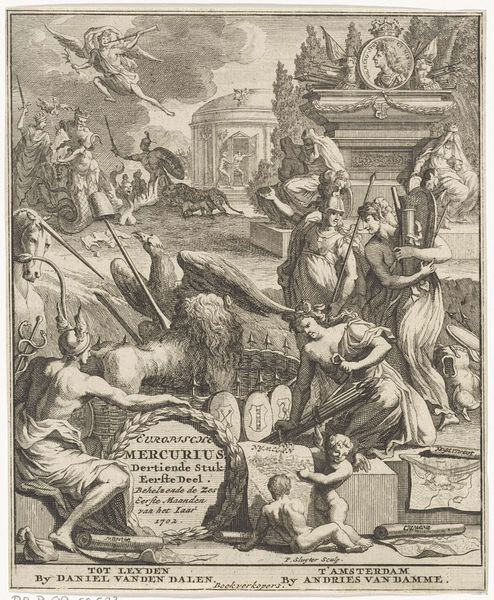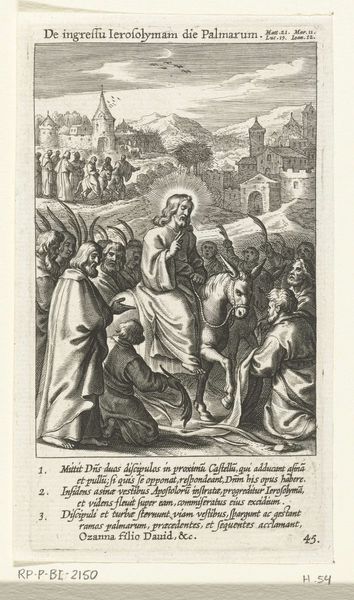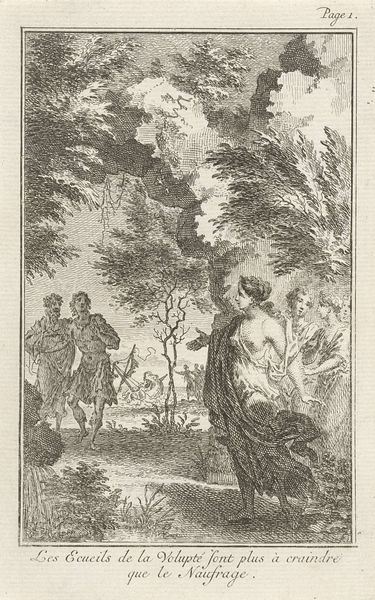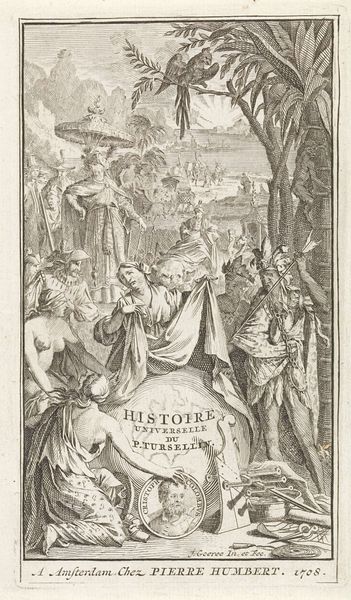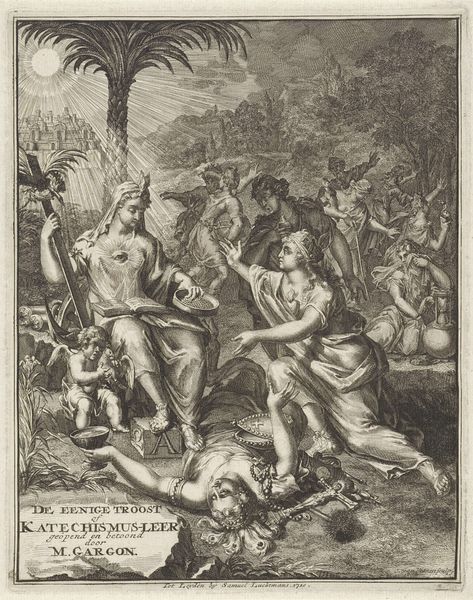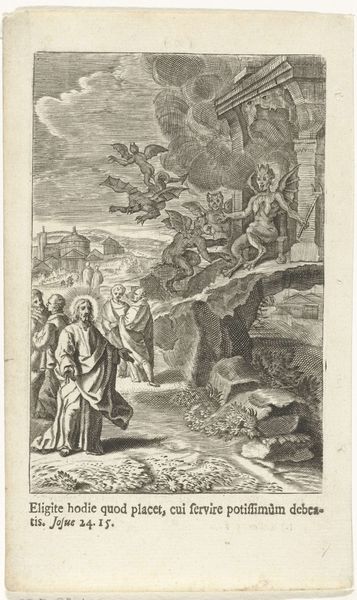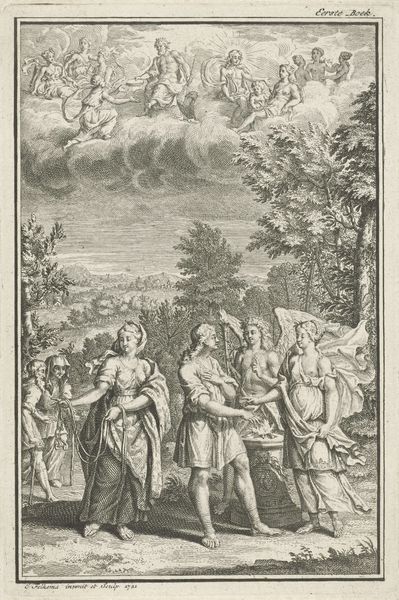
print, etching, paper, engraving
#
allegory
#
baroque
#
mechanical pen drawing
# print
#
pen sketch
#
etching
#
old engraving style
#
sketch book
#
landscape
#
figuration
#
paper
#
personal sketchbook
#
sketchwork
#
pen-ink sketch
#
line
#
pen work
#
sketchbook drawing
#
cityscape
#
history-painting
#
sketchbook art
#
engraving
#
realism
Dimensions: height 170 mm, width 138 mm
Copyright: Rijks Museum: Open Domain
Editor: This engraving, titled "Titelpagina voor de Europische Mercurius van 1742," created in 1742 by an anonymous artist, is brimming with figures and symbolism! It's like a stage set for something, but I'm not quite sure what. What kind of stories do you think this piece is trying to tell? Curator: It's less about a single story and more about promoting a particular political perspective. The "Europische Mercurius" was a journal, essentially state propaganda. Consider what visual cues would legitimize authority in 1742. Editor: Hmm, I see the figures; one is armed as if ready for war? Also, is that an attempt at an idyllic scene behind them, the "backdrop" feels…odd. Curator: Exactly. The armed figure represents strength, but notice how he’s framing, or perhaps guarding, this ideal landscape that could mirror The Netherlands themselves. Are they showing The Netherlands as powerful because it’s fruitful and prosperous? Consider who this is targeted towards. Editor: So the idealized image, maybe along with Mercury to invoke trade, are supporting claims to the political status and agenda described in the journal? Curator: Precisely. It's about manufacturing consent through imagery. It uses recognizable symbols – strength, prosperity, tradition – to reinforce the current power structure, suggesting it’s the natural order. Editor: It’s almost unsettling to think of it as less about high art and more about marketing and shaping public opinion. I didn't really consider prints like these to have a purpose like this before, thanks for that! Curator: And that's the crucial point, isn’t it? Art is rarely neutral; it’s entangled in networks of power, influencing and reflecting its society. It is all about how these visual vocabularies are then consumed by their audiences.
Comments
No comments
Be the first to comment and join the conversation on the ultimate creative platform.
